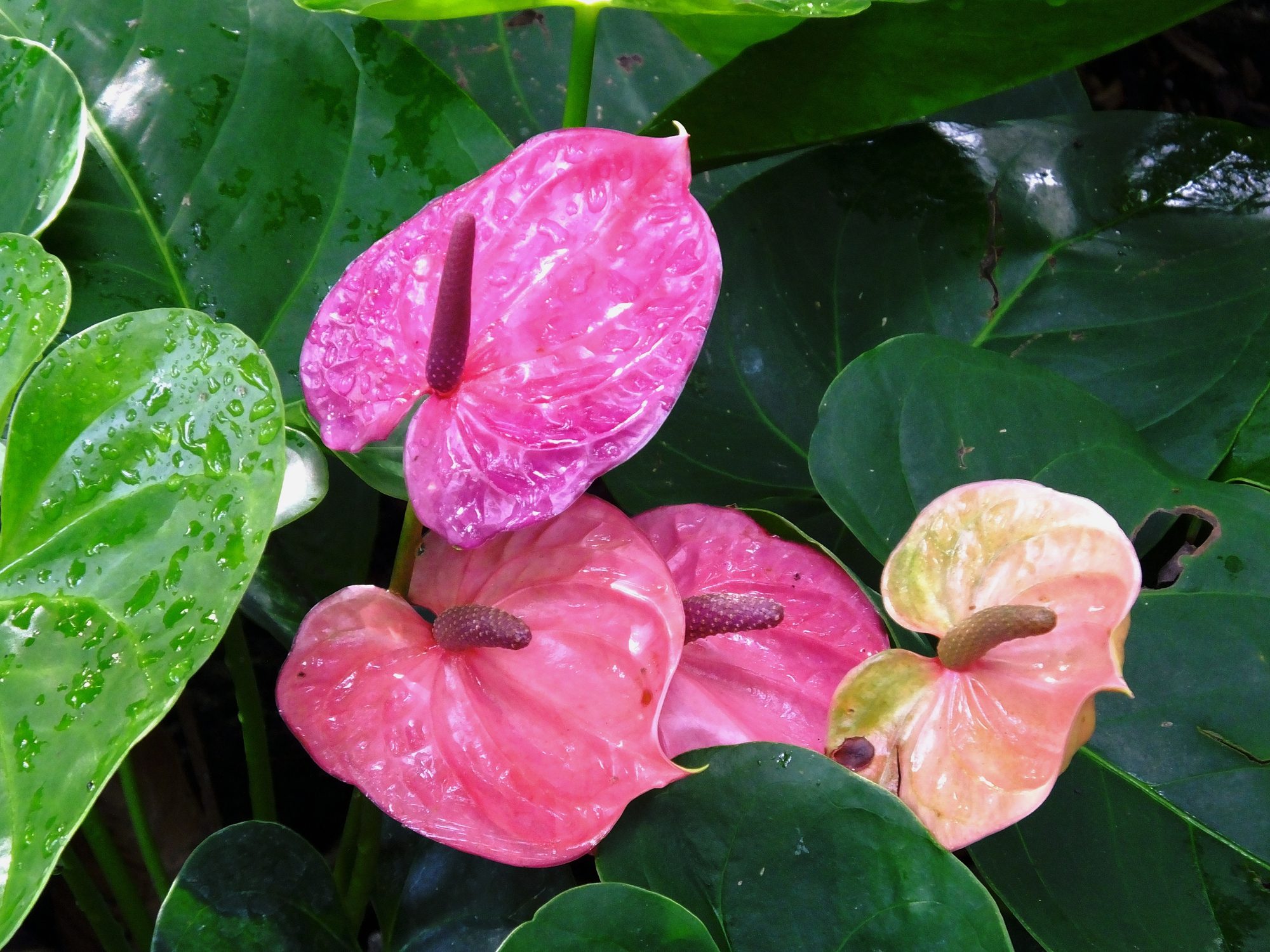Get expert care tips for anthurium plants. Learn how to grow flowering flamingo lilies at home for flamboyant color.

Grow Anthurium (Flamingo Lily) for Tropical Flair

On This Page
Why Are Anthurium Plants Popular?

The exotic-looking heart-shaped “blooms” that make anthurium irresistible as houseplants are, in fact, spathes, or modified leaves surrounding the true flower stamen. Still, in shades of white, pink, red, and smoky purple, they are unmistakably beautiful. Anthurium, also called flamingo flower or flamingo lily, is known as one of the longest-blooming houseplants, with each colorful inflorescence lasting up to eight weeks.
“A lot of anthurium varieties are really tolerant of conditions in the average home, making them easy-care, low-maintenance houseplants just about anyone can enjoy, regardless of their skill or experience level with houseplants,” says Justin Hancock, Costa Farms horticulturist.
Anthurium Care and Growing Tips

- Scientific name: Anthurium scherzeranum
- Common name: Flamingo lily
- Water needs: wait until top of soil is dry; do not overwater
- Light needs: bright, indirect light
- Soil needs: Well-draining soil
There are some key secrets to growing anthurium. Here’s what you need to know to help them thrive.
Most of the varieties commonly sold for their abundant flowers are pretty forgiving, Justin says, adding, “…just give them bright light and warm temperatures (average household temperatures are usually fine) and many can bloom nonstop throughout the year. The best home conditions are about 3 or 4 feet from a good-sized, unobstructed east- or west-facing window or the equivalent from plant grow lights. They do well in average household humidity levels (over about 40%). While they appreciate higher humidity, they don’t require it.”
However, anthurium plants don’t like surprises when it comes to temperature. They prefer consistency, so avoid spots near drafty windows and heat or air conditioning vents. Sudden temperature shifts up or down can cause leaves to yellow or brown.
Water and Fertilizer
Since many anthuriums are epiphytes that grow on tree roots in the wild, let them dry out slightly between waterings, Justin points out. “If you’re not sure whether they need water, it’s usually best to wait until you’re sure they do to avoid issues with overwatering,” such as root rot, he says. Justin recommends letting the top 25 to 50% of the soil medium dry out before watering, depending on the species.
Anthurium Plant Lookalikes

Anthuriums’ flowers could be mistaken for peace lilies (Spathiphyllum) but their leaves are wider, with a leathery texture, and the plants don’t wilt as quickly when dry.
Are Anthurium Plants Toxic?
Importantly, like many of their cousins in the Arum family, anthurium plants are somewhat toxic to pets and humans, causing oral irritation and vomiting if ingested. So, they should be kept out of reach of children or pets.
Repotting and Propagation
“Depending on your plant, you may be able to divide your anthurium if there are a clump of plants,” says Justin. “Each section should grow if it has roots and shoots. If you have an older anthurium, you may also be able to propagate it from stem cuttings where you cut a section of stem and pot it in moist sand, perlite, or another medium. If it’s kept warm, bright, and humid, it may root.”
When repotting, consider these switches if you tend to overwater: terracotta containers, clear plastic liners to help check root health, and well-draining media with bark and perlite, he says.
Common Pitfalls and Mistakes
Overwatering and too little light are two of the most common conditions we see that can stress out anthuriums, making them more susceptible to disease,” says Justin. Happily, he says, anthuriums are not prone to pests or disease unless the plant is weakened.
Need a plant for a dark room? Try one of the top 10 best houseplants for low light.
Anthurium Plant Not Blooming
“Typically, the most common reason we see flowering-type anthuriums refuse to bloom is too little light,” Justin says, “so if you have the option of moving it to a brighter spot, that may help. If you don’t have a brighter spot, consider augmenting natural light with artificial light, such as an LED lamp about 12 inches above the plant.”
Once that issue is resolved, fertilizer can also help trigger blooms. “Any general-purpose fertilizer formulated for use on houseplants should do the trick,” he says.
Editor’s note: Deadheading your flowers as they fade is up to you. While it neatens up your plant, it doesn’t encourage blooming.
Sources
- ASPCA – Flamingo flower
- North Carolina Cooperative Extension – Anthurium
About the Expert
Justin Hancock is a horticulturist at Costa Farms, one of the largest horticultural growers in the world. He has gardened in a variety of climates throughout the country; as his Costa Farms bio lists, “from northern Minnesota to Miami.” He currently resides in Florida.




















